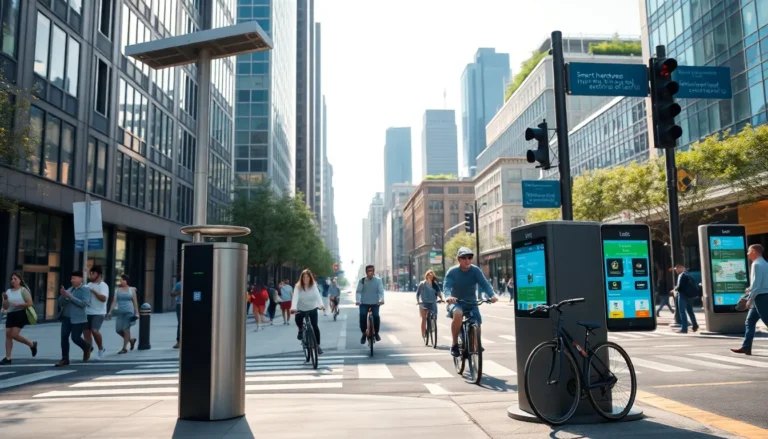Table of Contents
ToggleIn an era where innovation is just a smartphone tap away, CPG startups are shaking up the consumer goods landscape like never before. Imagine walking down the grocery aisle and finding products crafted by passionate entrepreneurs rather than corporate giants, products that match your values, taste preferences, and, dare we say, your Instagram aesthetic. Welcome to the world of CPG startups, where creativity meets consumer demand, and the old guard is getting a run for its money. Buckle up: this journey through the CPG startup landscape is going to be as thrilling as a roller coaster ride, with a few twists and turns that might just blow your mind.
Understanding the CPG Startup Landscape

The Consumer Packaged Goods (CPG) startup landscape is vibrant and diverse. From health-focused snack brands to eco-friendly household products, their common thread is innovation. CPG startups encompass companies that produce goods consumed daily, ranging from food and beverages to personal care products. These startups are typically driven by a desire to disrupt traditional retail channels and are agile in responding to market changes. Also, the rise of e-commerce has opened new distribution channels that allow these nimble startups to compete with established brands, shifting the consumer’s focus toward unique and personalized offerings.
Key Trends Driving CPG Startup Growth
Several key trends are fueling the growth of CPG startups. A heightened consumer awareness about health and wellness is one of them. For example, many startups focus on organic ingredients and transparent labeling, catering to the conscious consumer. Sustainability is another significant trend. Brands that prioritize eco-friendly practices, from sourcing materials to packaging, have gained a loyal following.
Also, personalization plays a central role in consumer preferences today. Startups are leveraging technology to create customized products that appeal to individual tastes, making them stand out in a crowded market. The influence of social media cannot be overlooked either: platforms like Instagram and TikTok serve as powerful tools for branding, allowing startups to engage directly with their target audience.
Challenges Faced by CPG Startups
While the opportunities are abundant, CPG startups are not without their challenges. The competition is fierce, with established brands possessing substantial marketing budgets and loyal customer bases. New entrants must find inventive ways to break through the noise. Also, obtaining funding can be a challenging job. Many startups bootstrap their way to success, but limited capital often constrains growth.
Regulatory scrutiny is another hurdle that cannot be ignored. As consumers demand safer and cleaner products, startups must ensure compliance with testing and labeling requirements, navigating these regulations can be laborious. Finally, maintaining a sustainable supply chain poses yet another challenge, especially as consumer expectations for transparency and sustainability heighten.
Success Stories in the CPG Startup Arena
Several CPG startups have turned challenges into triumphs, exemplifying what can be achieved with creativity and determination. Take Olipop, for instance. This sparkling tonic brand has redefined soda, infusing health-conscious ingredients and gut-friendly benefits into a beloved classic. Their story reflects how a startup can tap into consumer trends, leading to exponential growth and widespread acceptance.
Another shining example is Magic Spoon, which has reinvented cereal for the health-driven consumer. With high-protein, low-carb options, they’ve captured a market craving nostalgia without compromising on nutrition. Both brands showcase the potential for CPG startups to fill gaps left by traditional brands, resonating deeply with modern consumers.
Strategies for Success in the CPG Startup Space
To thrive in the dynamic world of CPG startups, several strategies can prove crucial. First and foremost is the importance of understanding consumer behavior. Startups should engage directly with their audience through surveys, social media, and product testing to gather valuable insights.
Creating a strong brand identity that resonates with the target demographic is essential. This includes storytelling, which allows brands to connect emotionally, fostering loyalty. Also, investing in strategic partnerships can enhance visibility and credibility. Collaborating with established companies or influencers can broaden reach and accelerate growth.
Finally, startups must embrace data analytics. Using metrics to guide decision-making, from product development to marketing strategies, enables a more adaptive approach that can pivot based on consumer feedback.
The Future of CPG Startups
The future for CPG startups looks promising, fueled by continuous shifts in consumer preferences and advancements in technology. As consumers grow increasingly demanding about product quality, transparency, and sustainability, startups that prioritize these elements will likely find success. The rise of artificial intelligence and machine learning will also revolutionize personalization, allowing brands to cater to individual consumer needs more effectively.
Also, the ongoing expansion of e-commerce will continue to level the playing field between startups and established brands. With direct-to-consumer models becoming more prominent, startups have the advantage of building relationships directly with their customers, enhancing customer loyalty.




